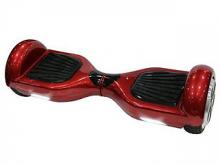This mandatory safety standard applies to self-balancing scooters.
About self-balancing scooters
A self-balancing scooter is a ride-on device that meets all of the following:
- it has 1 or 2 wheels
- it has no steering grips, seat or handlebars
- it is powered by a lithium-ion battery that is rechargeable from the mains power supply.
Self-balancing scooters are also known as:
- hoverboards
- monoboards
- gliders
- smart boards
- sky walkers
- mod boards.
Mandatory standard
The Consumer Goods (Self-balancing Scooters) Safety Standard 2018 sets out the mandatory requirements for the supply of self-balancing scooters.
The mandatory standard was last reviewed and maintained on 29 June 2021.
Read more in the Explanatory Statement on the Federal Register of Legislation website.
Main requirements
A self-balancing scooter must comply with one of the following three options covering requirements for design, construction and performance:
- relevant sections of the International Electrotechnical Commission (IEC) and voluntary Australian/New Zealand standards
- relevant sections of the Underwriters Laboratories Inc. standard UL 2272
- the Consumer Goods (Self-balancing Scooters) Safety Standard 2016 (with variations).
Suppliers must not rely on this information as a complete guide to compliance. Refer to the Consumer Goods (Self-balancing Scooters) Safety Standard 2018 for the full requirements.
Access to standards information
The mandatory standard is based on voluntary Australian and international standards. You can purchase a copy of these standards from any of the following websites:
- SAI Global
- Techstreet
- the International Electrotechnical Commission (IEC)
- Underwriters Laboratories Inc.
The Australian Competition and Consumer Commission can make a copy of these standards available for viewing at one of our offices, subject to licensing conditions.


